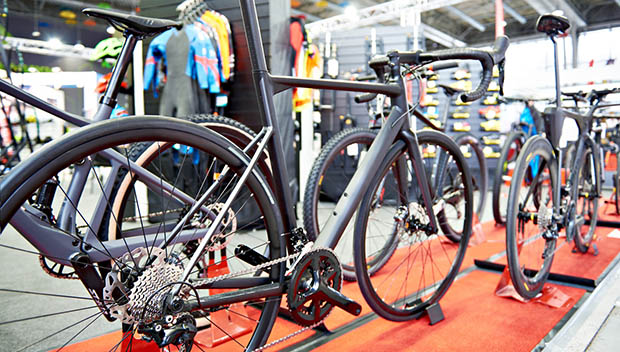
Despite being one of the most effective ways to get an impact-free workout that's safe for all ages, cycling requires a lot of gear. Unlike running or swimming where all your gear can be stored in a backpack in your closet, a bike is a pretty large piece of equipment that requires much more real estate in your home or garage. Multiply this several times over (N+1 rule, please), and you'll have a mess on your hands before you can say "Eddy Merckx."
As easy as it'd be to suggest you just leave them on the side of the house or in the backyard, bikes can be worth thousands of dollars—we recommend keeping them indoors where they're not just protected from theft, but they'll be shielded from the elements, too.
There's a whole host of ways to store your bike inside, but here we'll address five of the most common methods. Of course, simply leaving a bike or three in the hallway is always an option, but in case your significant other isn't OK with that, these are some great alternatives.
Bike Hoist
One of the more complex storage solutions on this list, a bike hoist is exactly what it sounds like: a way to lift your bike off the ground and store it in the rafters. It utilizes a pully system where you simply hook the bike's saddle and handlebars and slowly lift the bike by pulling on the rope. This storage method is perfect for rooms or garages with high ceilings where having a bike hanging above won't pose a risk for cars pulling in or people walking by.
Ceiling Mounts
For houses or apartments with limited floor storage space, ceiling mounts are a great solution. Similar to a bike hoist, this method stores bikes upside-down, off the ground by means of hooks.
While it's easy and common to install large hooks into a stud on the ceiling and hang your bike from them, this requires a precise measurement and won't be compatible with a range of different-sized bikes. This ingenious solution from Saris includes four sets of hooks that adjust to any sized wheelbase automatically, meaning that no matter if you're hanging a mountain bike or a road bike, you don't have to worry about which order they're hanging from after wrapping up a ride.
Wall Mounts
Leaning a bike leaning against a wall in the garage poses a risk of it being knocked over (usually in slow motion, with a crash, bang and a few cuss words thrown in). A wall mount still keeps a bike parallel to the wall, but it suspends it off the ground by cradling the bike with hooks on the top tube. It's more secure, and depending on the size of the bike, wall mounts will often allow one bike to be stored above the other on the same wall.
Note that some ultra-lightweight carbon frame manufacturers suggest no pressure be put on the top tube. Keep this in mind when deciding if a wall mount is right for you.
Gravity Stands
If you're renting your living space, you may not want to put holes in the wall to mount hooks or hardware to store your bike. Gravity stands are a nice alternative—they keep your bike (in this case, bikes) off the ground and are designed to safely lean against a wall. They're compact, adjustable and give you the flexibility to store your bikes wherever you move the stand.
Floor Stands
Floor stands have come a long way since the the fixed metal bike racks at your school when you were a kid. While you can still find racks that hold your bike upright by sliding the wheel into the slot (if you go this route, make sure the rack is wide enough for your wheel), it's more and more common to see floor stands that prop a bike up by its rear hub. These floor stands utilize the gap between the frame and the hub, and are often compatible with both road and mountain bikes.
READ THIS NEXTT: The 8 Cardinal Sins of Bike Ownership


